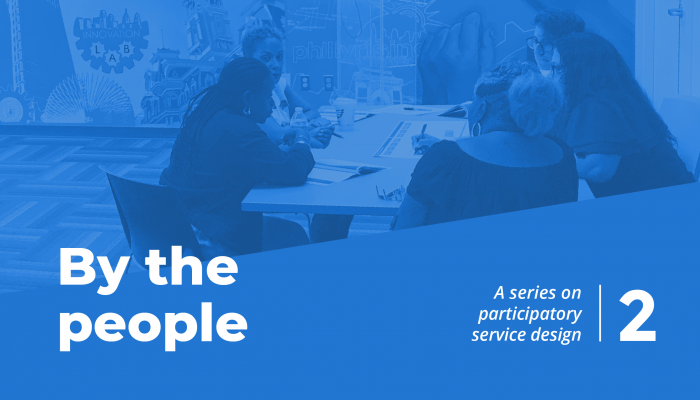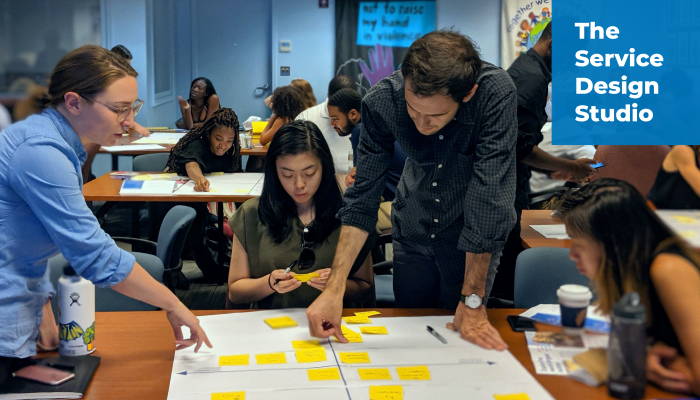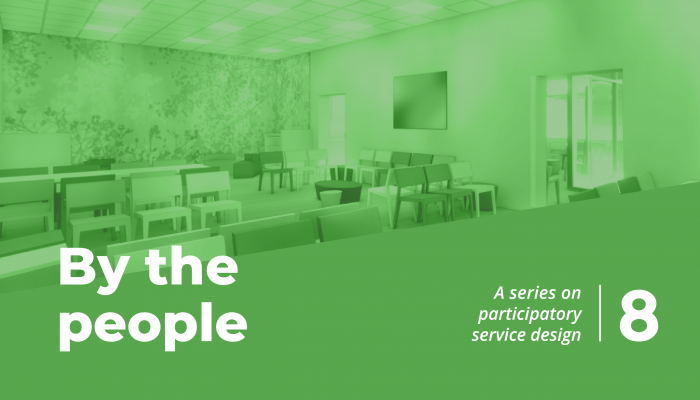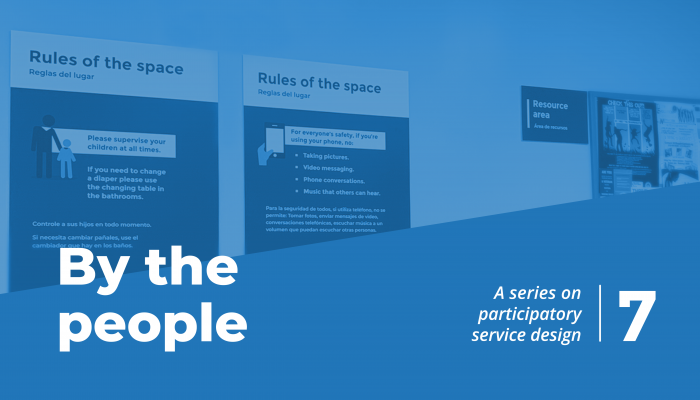This post is part of a series called By the people. It explores how the Office of Homeless Services (OHS) and the Office of Open Data & Digital Transformation (ODDT) are using participatory service design methods to improve the City’s homeless prevention, diversion, and intake services. If you’re new to the series, begin with our first post.
As service designers, our work begins and ends with people. So, when we began exploring ways to improve the City’s homeless prevention, diversion, and intake services, our first step was to identify the people who access or deliver those services.
Our goal? By understanding their experiences, we could make person-centered improvements to best serve their needs. Let’s dive in by exploring the following questions:
- What does “people-centered” mean?
- What tools do we use to understand the breadth of people connected to a service?
- Who is involved with the City’s homeless prevention, diversion, and intake services?
Designing with people, not for them.
Learning about people’s needs is essential to compassionate design and good “customer” experiences.
Sometimes, there can be a disconnect between a policy’s intention and how it’s actually implemented or experienced by people on the ground. This disconnect can occur when policies don’t address real needs. In some cases, the need wasn’t clearly understood from the beginning. When service breakdowns emerge, feelings of mistrust can develop between those who use services and those who deliver, support, and advocate for them.
“I think the powers that be need to start a focus group. It has to be people who have no agenda. It would have to be people who thoroughly understand the process and see where [it may not be] working. Someone who’s really honest; an average person.” – Person experiencing homelessness at a City access point
In contrast, people-centered design puts people’s lived experience at the center of policy and decision-making.
By designing with people, not for them, we’ve invested in restoring connections among those involved in or impacted by homeless prevention, diversion, and intake services. If we address the disconnects between policy and reality, we can improve people’s lived experiences on the ground.
It’s not just about the participant.
Often, professionals use descriptors like human-centered, people-focused, people-centered, and user-centered interchangeably. We rarely use the word “user.”
First, the term is one-dimensional and lacks humanity. Second, we’re not only focused on people who access City services (or participants) in our design work. We also want to help the people who support them across a provider network and within an organization’s hierarchy.
Here’s something we know: Empowered staff effectively empower others, while disempowered staff disempower others. That makes designing with and for staff just as important as designing with and for participants.
Stakeholder maps: Understanding the breadth of people connected to a service.
If you’re going to center people’s lived experiences in your work, you must identify them and their role. As service designers, we use a tool called a stakeholder map to understand how people and organizations connect to each other within the space of a service or related services.
We do this to:
- Ensure we have a clear sense of all key stakeholders.
- Map power, hierarchy, and layers of influence among people and organizations.
- Find relationships between stakeholder groups and study the health of those relationships.
The people ecosystem for the City’s homeless prevention, diversion, and intake services is broad and deep. We organized our stakeholder map into the following categories:
- People who access and use the service:
- Participants: Individuals and families seeking prevention, diversion, and intake services through the Office of Homeless Services (OHS).
- People refusing services: Individuals who actively refuse to engage with OHS.
- People who deliver and support the service:
- Front-line staff: Security officers, service representatives, and social work staff who interact directly with participants to deliver the service.
- Leaders: Supervisors, access point administrators, and directors who provide vision, guidance, and support.
- Service partners: Staff who run and operate outreach, after-hours centers, emergency housing sites, overnight respites, and engagement hubs.
- People who influence the service:
- Concerned residents: Residents, businesses, advocacy groups, researchers, and academics who advocate for people experiencing homelessness.
- Referral groups: Community organizations and hospitals who build awareness of the City’s services and refer people to prevention, diversion, and intake.
- Agency partners: U.S Department of Housing and Urban Development (HUD), Department of Behavioral Health and Intellectual Disabilities (DBHIDS), Philadelphia Parks & Recreation, Department of Licenses & Inspections, Police, Prisons, SEPTA, and City Council.
Throughout the design process, we referenced our map to make sure we were engaging the right people and accounting for their experience.
Meet the people of prevention, diversion, and intake in Philadelphia.
There are 39 mostly non-profit, City-contracted organizations or partners who support the City’s prevention, intake, and emergency housing services. For outreach services, OHS collaborates with City agencies like DBHIDS. They also get policy direction and federal grant money from HUD.
There are two teams who work together to administer the City’s homeless prevention, diversion, and intake services. Both are directed by one of our core project leads, Bruce Johnson. These teams are:
- The prevention team, which assists people and families who are at risk of becoming homeless. This team is led by Joshua Potts.
- The diversion and intake team, which works with people and families who are experiencing homelessness. This team is led by Linda Ricci and Kareema Spearman.
Individuals and families seeking homeless prevention, diversion, and intake services can receive assistance at two locations—or access points—in Philadelphia. They are Apple Tree Family Center in Center City and Roosevelt Darby Center on North Broad Street. Each year, about 7,500 households visit the City’s access points for help and about half of them receive emergency housing assistance. Others work with staff to find alternative solutions, safely and effectively diverting from the system in a variety of ways like through family mediation.
At each site, there are security officers, service representatives, social work staff, supervisors, mental health specialists, domestic violence specialists, and health professionals who contribute to a participant’s service experience.
These are some of the individuals and groups whose experiences shaped our decision-making.
. . . . . . . . . . . . . .
In our next post, we’ll discuss how we engaged stakeholders and centered their lived experiences throughout the design process.
Questions or comments? Email oddt@phila.gov.




